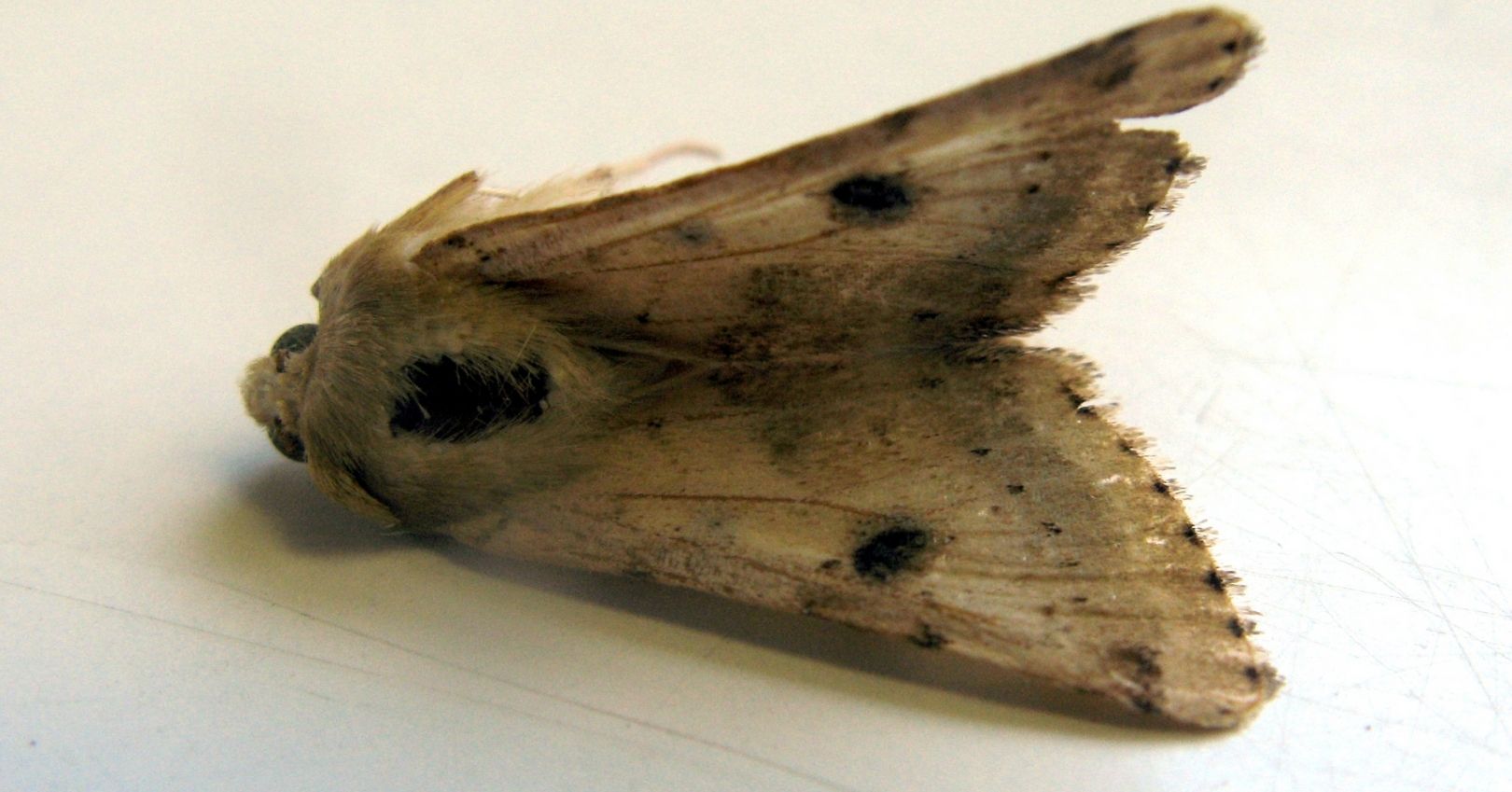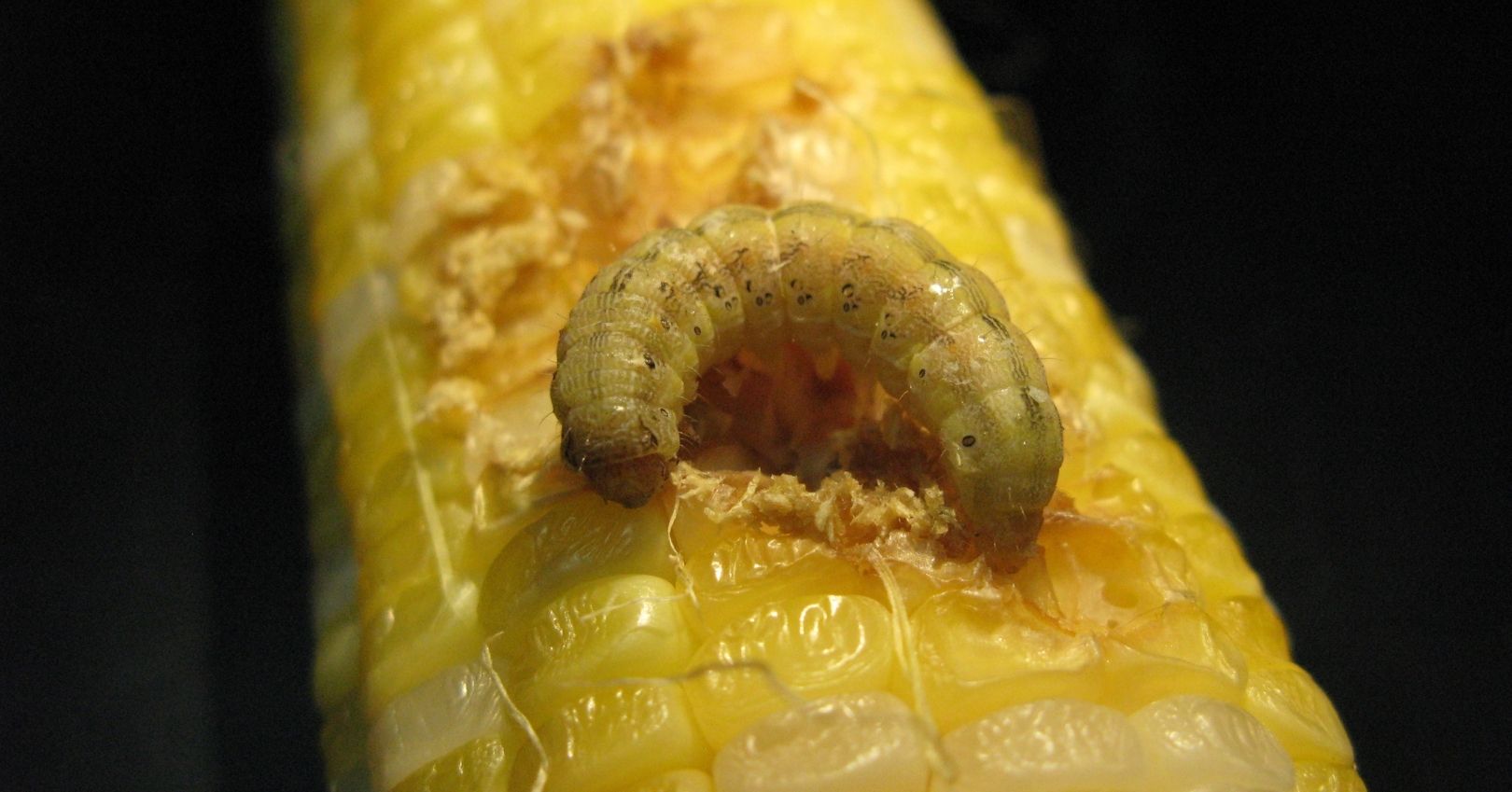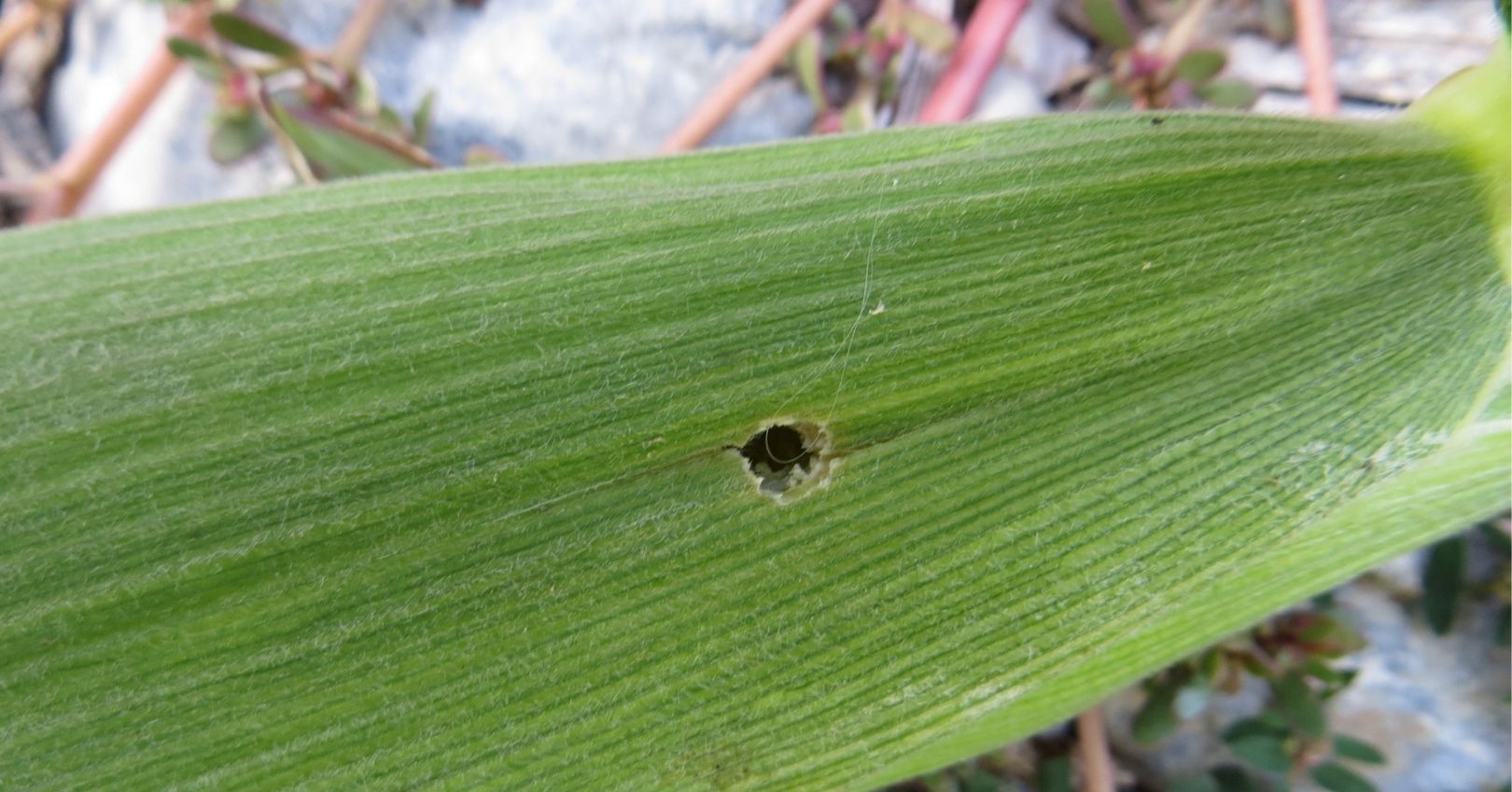Corn Earworm



Description
Adult: Tannish-brown moth with a 1.5 inch (38.1 mm) wingspan. The front wings are marked with a distinct dark spot in the center and darker bands near the outer margins. The hind wings are lighter tan, with a dark band along the outer margins. The male moths have green eyes.
Egg: Very small, one-half the size of a pinhead, creamy white and dome-shaped with ridges, darkening in color as they near hatching.
Larva: Caterpillars are brown-headed with green, brown, or black bodies. Alternating dark and light stripes run lengthwise on the body. Larva length ranges from 0.1 inch (1.5 mm) up to 1.5 inches (38.1 mm) when fully grown.
Pupa: Cylindrical, brown, about 1 inch (25 mm) long.
Life History
Corn earworms (CEW) overwinter in the soil as pupae in warmer locations of the state and further south. Moths emerge in the spring and migrate or are blown into northern Utah. There are usually 3 flights, or generations, per year in northern Utah; 4 or more in southern Utah. The first flight begins in mid-June to early July in northern Utah, and is typically small. The second and third flights are much larger and occur during August and September, respectively. Moths are active on warm, overcast evenings.
CEW moths typically lay eggs singly on fresh, green corn silks. Each female moth can lay up to 1,000 eggs, and will lay eggs on weeds and selected vegetables when corn silk is unavailable. Eggs hatch in 2 to 10 days, depending upon the temperature. The newly hatched larvae crawl down the corn silk and into the ear tip where they chew into developing kernels, but larvae will also chew on silks and leaves. CEW larvae are cannibalistic and so usually only one larva is found per ear, but several larvae per ear can occur under high population pressure.
Larvae feed within the ear for 10 to 14 days, and then will exit, drop to the ground, and burrow 2 to 5 inches into the soil to pupate. The corn earworm rests as a pupa for 10 to 25 days before emerging as an adult moth for a subsequent generation. Pupae formed in late summer may overwinter in warmer climates, otherwise they are killed by cold winter temperatures.
Damage
CEW causes direct damage by chewing into kernels near the ear tip and/or chewing on silks, decreasing pollination, and leading to poor ear-fill. Frass within the ear produced by feeding can reduce quality, storage life, and increase mold growth. Additionally, injury at the ear tip provides openings in the husk that can attract sap beetles and earwigs.
Reapplication Intervals for Corn Earworm Treatment While Silks are Actively Growing.
| Number of Moths Trapped Per Night | Insecticide Reapplication Intervals (Days) |
| Less than 0.2 | None |
| 0.2 to 0.6 | 5 |
| 0.7 to 6.5 | 3 |
| More than 6.5 | 2 |
The above reapplication intervals are based on guidelines from the University of Maine Extension and seem to work for Utah. Reapply insecticides using the suggested intervals while silks are still actively growing. Stop sprays when silks turn brown.
Management
Cultural
- Plant resistant corn. Corn varieties with long, tight husks are physically more difficult for earworms to enter. Some varieties with reported resistance are ‘Country Gentlemen’, ‘Staygold’, ‘Golden Security’, and ‘Silvergent.’
- Plant early. Plant corn early enough so that the corn will silk before major moth activity occurs to escape injury.
- Use clothes pins. Place a clothes pin at the point where silk enters the ear. This helps keep worms out of ears, and should be done soon after the first silk emerges. Leave pins in place until the ear has filled and is ready for harvest.
- Till soil in the fall. In places where pupae overwinter, fall tillage of corn fields decreases their survival.
- Use traps and lures to monitor CEW populations.
◦ Use the net style Heliothis trap and a pheromone lure for baiting CEW monitoring traps.
◦ Place the trap by early June along the edge of the corn field; attach the trap to a stake or post so the bottom of the trap is about the same height as the corn silk. Move the trap to different areas of the field to keep it near fresh corn silk.
◦ Check twice weekly until first catch, then check daily for best results.
◦ Calculate the average number of moths per night, and follow threshold guidelines provided on the next page for deciding when to take treatment action.
Chemical
Good control is dependent on applying insecticides before larvae enter the ears. Start spraying within two days of the beginning of silking, or as indicated by trap counts. About half of the eggs are laid within two days of silk emergence, and the remainder are laid within the next nine days. Reapply insecticides to keep an active residue on new silk. Silk grows about ½ inch per day. Once silks turn brown, they are no longer attractive as egg laying sites.
Biolgical
Many predators and parasites attack CEW eggs, including several species of Trichogramma, an egg parasitoid wasp. These wasps lay their eggs inside the eggs of the earworm (they are tiny!). Most parasitized CEW eggs turn black, but there may be a lag period before they do so. Trichogramma occurs throughout North America, and releases of this parasite into corn fields to control corn earworm have been successful, achieving 50% to 100% parasitism; however, there has been limited success in Utah. Several insectaries offer these biological control agents for sale. Green lacewings, which are generalist predators, occur naturally and are also available to purchase. Other predators include a native soldier beetle (eats larvae in ear tips), minute pirate bugs (eats eggs and larvae on silk), and damsel bugs. A natural bacterial pathogen, Bacillus thuringiensis (Bt), and a nuclear polyhedrosis virus also kill earworm larvae. Insecticides made from these natural pathogens target earworm more specifically and are safer for beneficial insects.

